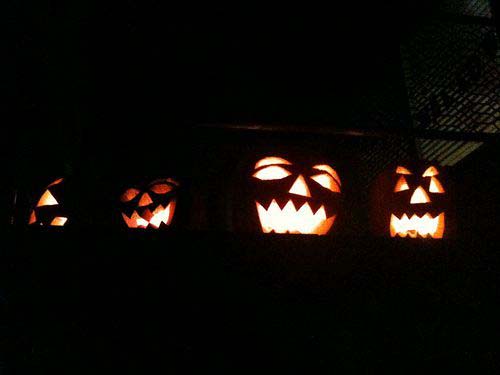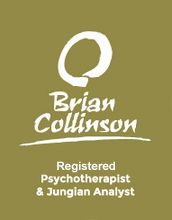A Jungian Psychotherapist Looks at Hallowe’en as Symbol

Hallowe’en is one of the most enjoyable nights of the year in my opinion; as a Jungian case studies, I’m also fascinated with its symbolism.
As the young go around with their treat bags, dressed as ghosts, witches and fantasy figures, they’re have a great time, as all can see. But are they also symbolically living out something important in psyche, for all of us?
What is this Hallowe’en thing, after all? Why do 21st century people do it? Its roots are a matter of great interest to a Jungian case studies…
How Did Hallowe’en Get Started?
The most important root source of Hallowe’en is probably the pagan feast of Samhain, celebrated across the Celtic world. At Samhain it was believed that the ‘door’ to the Otherworld opened to allow the souls of the dead, fairies, and other beings to enter this world. It was expected that dead kinsfolk would revisit their former homes on Samhain. The souls of dead kin were invited to feasts, and a place set at table for them.
Ghosts
Recently, on Twitter, I quoted Salman Rushdie:
“Now I know what a ghost is. Unfinished business, that’s what.”
For a Jungian case studies, those ghosts may be things from our individual past with which we simply haven’t dealt. They may be issues of pain or sorrow, or unresolved longings in our early life. They may be unrealized possibilities in our later lives. But whatever they are, if they come to us, we probably need to deal with them.
Ghosts may also be something other than personal. Some of the ghosts that come back to us can belong to our family, our ethnic group, or the society as a whole. The ghosts of racial and sexual attitudes, bigotries, collective fears, family or community complexes. And even beyond this, there are the archetypal factors that dwell in the collective unconscious of the human race, and demand our attention.
Setting a Place at the Table
The ancient Celts knew that their ghosts would come back from the other side, and would need to be met and dealt with. The Celts knew that the ghosts had business with us. Their myth and legend told them that the ghosts would be hungry, would need a place at table, and would need the fellowship of breaking bread. In essence, they showed their ghosts hospitality.
Hallowe’en As Symbol
Hallowe’en reflects to us our own need to show our “ghosts” hospitality, to break bread with them, feed them. A Jungian case studies sees this symbolism as reflecting an aspect of our own need for soul. There are vital elements that need to come to life in our lives, and elements of the unconscious that we need to uncover for the first time.
So, give food to the ghosts, goblins or fairies at your door; in addition to being a good neighbour, you’re symbollically opening the door to your own soul, and to the journey of soul work…
[cta]
PHOTO:  Some rights reserved Fifikins | VIDEO: OdessaWest “Dead Man’s Party” Oingo_Bingo © 1991 UMG Recordings, Inc.
Some rights reserved Fifikins | VIDEO: OdessaWest “Dead Man’s Party” Oingo_Bingo © 1991 UMG Recordings, Inc.


Colette Kavanagh
I grew up in Ireland and celebrated Hallowe’een there as a young child – Irish style. The symbolism and meaning was different than you suggest. If you would like to know more let me know.
Brian C
Thank you for your comment, Colette. I would be very interested to dialogue about the meaning of Hallowe’en as experienced in your Irish background.
I do need to say that much of the experience of Hallowe’en in different contexts is subject to the overlay of hundreds upon hundreds of years of Christianity on the basically pagan Celtic roots of Hallowe’en in the feast of Samhain. Christianity frequently “baptized” older pagan festivals: the most prominent example being Christmas, which was scheduled to coincide with the old pagan Roman feast of Saturnalia. You can see a similar phenomenon occurring with Hallowe’en, which, as All Hallows Eve, was baptised, and given a Christian interpretation in terms of All Saints’ Day, which follows on November 1st, or All Soul’s Day, which occurs later in November, as a time of remembrance of the saints, and also of all souls in purgatory.
Somewhat differing practices evolved within Christianity in Ireland and Scotland, along with other places, and the tradition which perhaps most directly influenced our practice of Hallowe’en here in North America was the Scottish, traces of which can be found in places like the poetry of Robbie Burns. It’s a very intriguing subject, with considerable diversity in the practice in different places in Europe. But I think that scholars are reasonably well agreed that the modern practice of Hallowe’en has its most fundamental root in the Celtic feast of Samhain. The symbolism of that rite very much reflects the type of psychological reality I describe above.
I would be very interested to hear more about the practice of Hallowe’en that you experienced in Ireland, Colette. What was that like, for you? Once again, thanks very much for your comment!